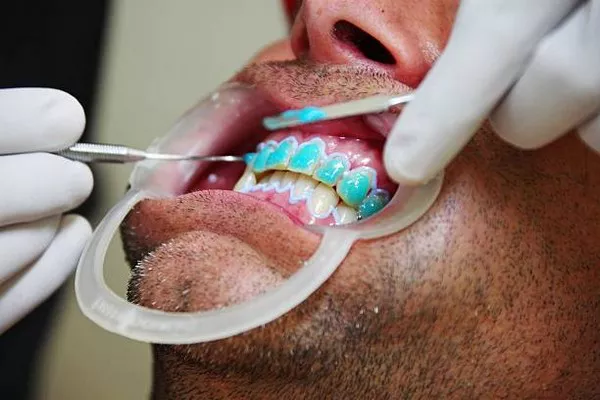In the realm of dental care, one of the most common procedures individuals undergo is tooth filling. Whether it’s to repair a cavity, address tooth decay, or restore a damaged tooth, the importance of effective and aesthetically pleasing fillings cannot be overstated. Among the array of options available, composite fillings stand out for their ability to seamlessly blend with the natural color of teeth, offering both functionality and cosmetic appeal. In this comprehensive guide, we delve into the world of composite fillings, exploring their composition, advantages, usage, durability, cost comparison, and the procedural aspects of getting them.
Common Name
Commonly referred to as a “composite filling” or “tooth-colored filling,” composite fillings have gained widespread popularity due to their ability to mimic the natural appearance of teeth. Unlike traditional silver or gold fillings that are easily distinguishable within the mouth, composite fillings seamlessly blend with the surrounding tooth structure, rendering them virtually indistinguishable.
Material Composition
At the heart of composite fillings lies a versatile material known as composite resin. This resin comprises a blend of plastic and fine glass particles, which can be meticulously matched to the shade of the patient’s natural teeth. This customization ensures that the filling seamlessly integrates into the tooth, providing a harmonious and aesthetically pleasing result.
Advantages
The aesthetic benefits of composite fillings are undeniable. Their ability to closely resemble the natural color of teeth makes them an ideal choice for fillings in visible areas, such as the front teeth. Beyond aesthetics, composite fillings offer several advantages:
- Aesthetic Appeal: As mentioned, composite fillings blend seamlessly with natural teeth, providing a discreet solution for dental restoration.
- Conservation of Tooth Structure: Unlike traditional amalgam fillings, which require the removal of more tooth structure for placement, composite fillings bond directly to the tooth surface. This allows for more conservative tooth preparation, preserving more of the natural tooth.
- Versatility: Composite resin can be used not only for fillings but also for cosmetic enhancements such as reshaping chipped or misaligned teeth, closing gaps between teeth, and even covering minor imperfections.
Usage
Composite fillings find their niche in a variety of dental applications, particularly in areas where aesthetics are paramount. They are commonly used for:
- Front Tooth Fillings: Due to their ability to mimic the natural color and translucency of enamel, composite fillings are often preferred for cavities or minor repairs on the front teeth, where their visibility is most pronounced.
- Visible Areas: Beyond the front teeth, composite fillings are also suitable for any teeth that are visible when smiling or speaking. Their ability to blend seamlessly with surrounding teeth makes them an ideal choice for maintaining a natural appearance.
Durability and Care
While composite fillings offer exceptional aesthetic results, their durability is another key aspect that patients value. With proper care and maintenance, composite fillings can provide long-lasting restoration. Here are some tips for ensuring the longevity of composite fillings:
- Maintain Good Oral Hygiene: Regular brushing, flossing, and routine dental check-ups are essential for preserving the integrity of composite fillings and preventing decay around them.
- Avoid Excessive Force: While composite fillings are durable, they may chip or fracture under extreme force. Avoid habits such as nail-biting, chewing on hard objects, or using teeth as tools to prevent damage to fillings.
- Regular Dental Visits: Routine dental visits allow your dentist to monitor the condition of composite fillings and address any issues before they escalate. Additionally, professional cleanings help to remove plaque and tartar buildup, reducing the risk of decay.
- Watch Your Diet: Limiting consumption of sugary foods and acidic beverages can help prevent decay and extend the lifespan of composite fillings.
Cost Comparison
When considering dental treatments, cost is often a significant factor for patients. While composite fillings typically come with a higher price tag compared to traditional amalgam fillings, many patients are willing to invest in the aesthetic benefits they provide. Here’s a brief cost comparison:
- Composite Fillings: The cost of composite fillings can vary depending on factors such as the size of the filling, the complexity of the procedure, and the geographic location of the dental practice. On average, composite fillings may range from $150 to $450 per tooth.
- Amalgam Fillings: Amalgam fillings, also known as silver fillings, are a more economical option compared to composite fillings. They typically range from $75 to $200 per tooth.
- Gold Fillings: Gold fillings, while durable and long-lasting, are the most expensive option. The cost of gold fillings can range from $250 to $4,500 per tooth, depending on the amount of gold used and the intricacy of the procedure.
While composite fillings may require a higher upfront investment, many patients find the aesthetic benefits and conservative tooth preparation worthwhile in the long run.
Procedure
The process of getting a composite filling involves several steps, beginning with an assessment of the tooth and extending to the final placement of the filling. Here’s an overview of the procedure:
- Tooth Examination: The dentist starts by examining the tooth to determine the extent of decay or damage. X-rays may be taken to assess the condition of the tooth beneath the surface.
- Tooth Preparation: Once the tooth is numbed with local anesthesia, the dentist removes the decayed or damaged portion using specialized dental instruments. Unlike amalgam fillings, which require mechanical retention, composite fillings bond directly to the tooth structure, allowing for a more conservative preparation.
- Composite Placement: After the tooth is prepared, the dentist applies layers of composite resin to the tooth, carefully shaping and sculpting it to achieve the desired contour and appearance. Each layer is cured (hardened) using a special curing light, which activates the bonding agent in the composite resin.
- Final Polishing: Once the filling is in place, the dentist polishes the surface to ensure a smooth finish and optimal aesthetics. The final result is a seamless restoration that blends seamlessly with the natural tooth structure.
- Post-Procedure Care: After the procedure, patients may experience some sensitivity or discomfort, which typically subsides within a few days. It’s essential to follow any post-procedure instructions provided by the dentist and maintain good oral hygiene to ensure the longevity of the filling.
Conclusion
Composite fillings represent a modern solution for white tooth restoration, combining aesthetic appeal with functional durability. With their ability to mimic the natural color and appearance of teeth, composite fillings offer a discreet and long-lasting option for dental restoration. While they may come with a higher price tag compared to traditional amalgam fillings, many patients find the investment worthwhile for the confidence and beauty they bring to their smiles. Whether it’s repairing a cavity or enhancing the aesthetics of a smile, composite fillings exemplify the artistry and science of modern dentistry.
FAQs About White Fillings
1. How long do white fillings last?
White fillings, also known as composite fillings, are known for their durability. On average, they can last anywhere from 5 to 10 years or even longer with proper care. However, their lifespan can vary depending on factors such as the size and location of the filling, oral hygiene practices, and individual habits like teeth grinding or nail-biting.
2. Why don’t dentists use white fillings?
Dentists do use white fillings, also known as composite fillings, extensively in modern dental practice. However, there are still instances where other types of fillings, such as amalgam (silver) or gold, may be preferred based on factors like the location of the cavity, the patient’s oral health needs, and personal preferences. While composite fillings offer excellent aesthetic results and are suitable for most situations, there are specific cases where alternative materials may be more appropriate.
3. Is white filling more expensive?
In general, white fillings, or composite fillings, tend to be slightly more expensive than traditional amalgam fillings. This is primarily due to the material costs involved and the additional time and skill required for placement. However, many patients consider the investment in composite fillings worthwhile for their aesthetic benefits and the conservative tooth preparation they offer. Ultimately, the cost of white fillings can vary depending on factors such as the size of the filling, the complexity of the procedure, and the geographic location of the dental practice.
4. What is the difference between composite fillings and white fillings?
Composite fillings and white fillings are actually the same thing; they both refer to dental fillings made from composite resin material. This resin can be precisely matched to the shade of the patient’s natural teeth, making the filling virtually indistinguishable. Therefore, there is no difference between composite fillings and white fillings—they are simply different terms used to describe the same type of dental restoration.































